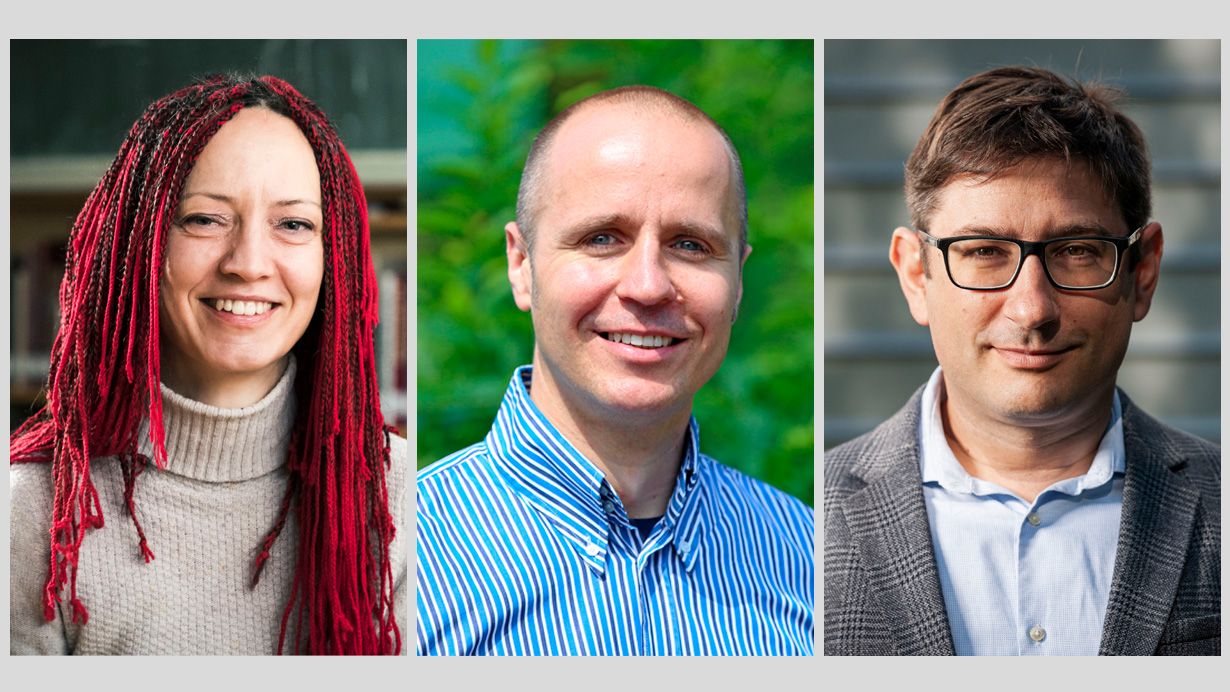
Researchers of Karlsruhe Institute of Technology (KIT) were very successful in the 2021 competition for the renowned Consolidator Grants of the European Research Council. For their projects on hydrogen embrittlement, ion dynamics, and digital art, materials researcher Christoph Kirchlechner, physical chemist Lars Heinke, and art historian Inge Hinterwaldner, respectively, will receive up to EUR 2 million each for the next five years.
"The Europe-wide competition for funding by the European Research Council is very hard. For this reason, I am highly pleased that no less than three researchers of KIT are awarded ERC Consolidator Grants for their ambitious and fascinating projects in the materials sciences and arts," says Professor Oliver Kraft, KIT Vice-President for Research.
Resilient Metals for Hydrogen Economy
In his project TRITIME ("Isolation, Observation, and Quantification of Mechanisms Responsible for Hydrogen Embrittlement Using Tritium-based Micromechanics"), Professor Christoph Kirchlechner studies the fatal effect of hydrogen embrittlement. Using high-resolution methods with the hydrogen isotope tritium, the materials researcher examines how and why metals change their strength when they are in contact with hydrogen. "With TRITIME, we will obtain fundamental understanding of hydrogen embrittlement mechanisms and contribute to customizing new materials used for the distribution and storage of hydrogen," says Kirchlechner, who holds the Professorship for Nanostructured Functional Materials and heads the Institute for Applied Materials - Mechanics of Materials and Interfaces.
Ionic Potentials on the Nanolevel
The DYONCON ("Dynamic Ions in Nanoconfinement for Porous Membranes with Ultrarapid Gas Permeation Control") project of physical chemist Dr. Lars Heinke also deals with materials research and even goes beyond. Within his ERC-funded project, he studies the dynamic properties of ions - electrically charged atoms or molecules - in porous materials. The associate professor heads a working group at KIT's Institute of Functional Interfaces. "Our work using ionic liquids and films shows that mobile ions in pores of nanometer size have unprecedented functionalities," Heinke says. His new approach is eventually aimed at improving electrochemical technologies for energy storage, sensors, and signal processing.
New View of Digital Art
An ERC Consolidator Grant is also awarded to a KIT researcher in the area of humanities and social sciences. In her project COSE ("Coded Secrets: Artistic Interventions in Digital Fabrics"), Professor Inge Hinterwaldner studies online art, that is computer-based artistic artefacts detected on the Internet. Hinterwaldner teaches history of art at KIT's Institute for History of Art and Architecture. Her interdisciplinary team will combine phenomenological-hermeneutic methods with approaches of media, games, and code research, software forensics, and visual design. Apart from esthetics, technical aspects of digital art, such as codes, files, and software will be in the focus. "In the COSE project", Hinterwaldner says, "we want to illuminate the black box 'computer art' in such a way that the humanities will be able to deal with programmed works more naturally in the future."
ERC Consolidator Grants 2021
The European Research Council (ERC) awards Consolidator Grants to projects of outstanding scientists, who were conferred their doctorates seven to twelve years ago and whose own independent working group is in the consolidation phase. In 2021, the ERC awarded Consolidator Grants in the total amount of EUR 632 million to 313 projects in 24 countries, including 61 projects at German universities and research institutions. 2652 proposals were submitted. The approval rate, hence, is about 12 percent.
Press Release of the ERC: https://erc.europa.eu/news/erc-2021-consolidator-grants-results
Being "The Research University in the Helmholtz Association", KIT creates and imparts knowledge for the society and the environment. It is the objective to make significant contributions to the global challenges in the fields of energy, mobility, and information. For this, about 9,800 employees cooperate in a broad range of disciplines in natural sciences, engineering sciences, economics, and the humanities and social sciences. KIT prepares its 22,300 students for responsible tasks in society, industry, and science by offering research-based study programs. Innovation efforts at KIT build a bridge between important scientific findings and their application for the benefit of society, economic prosperity, and the preservation of our natural basis of life. KIT is one of the German universities of excellence.






